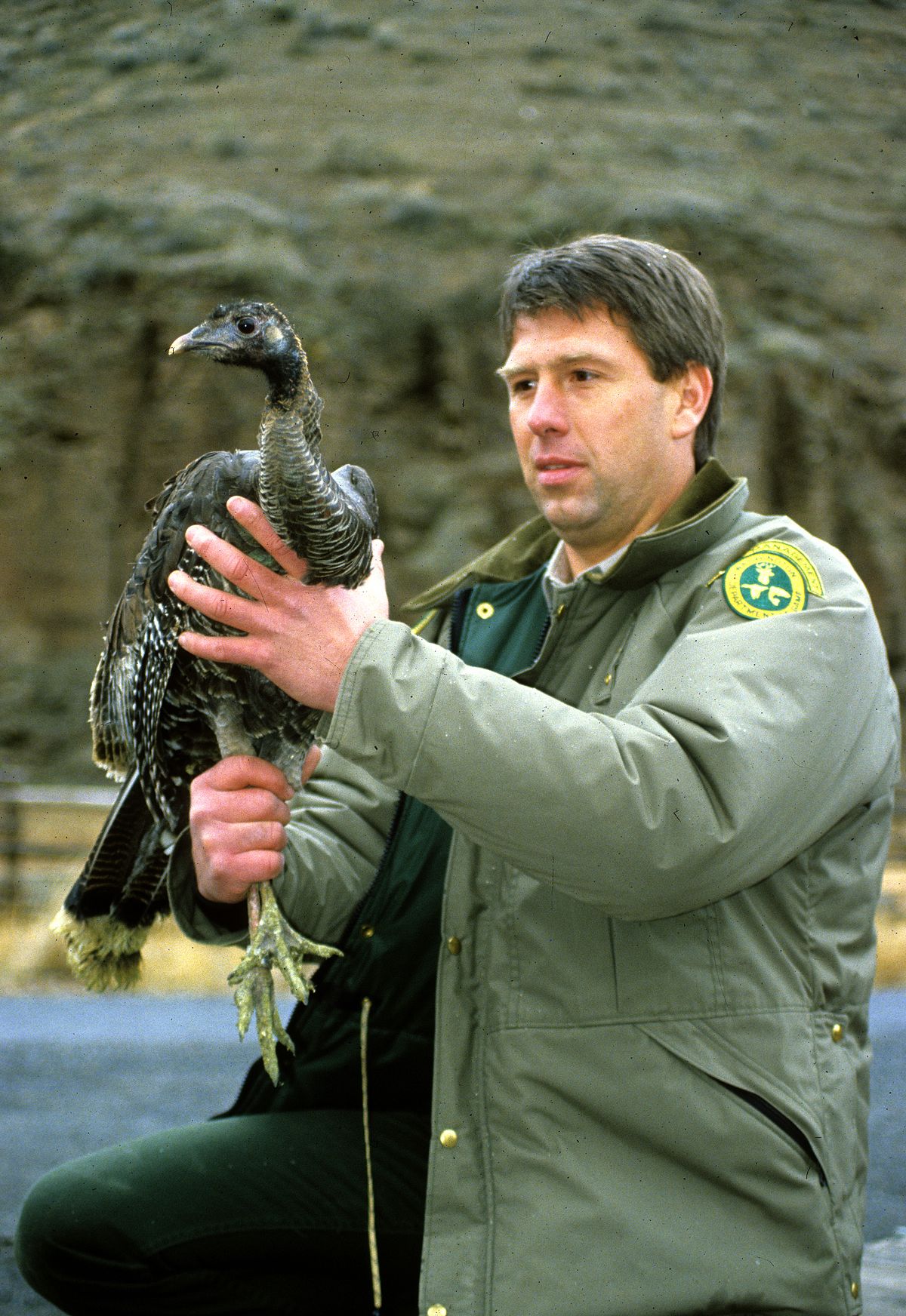Biologist makes wildlife a priority for 35 years

He apologized for having a wild-game potluck retirement party Nov. 21 while some hunting and fishing seasons were still under way.
“I don’t want to take from anybody’s time in the field,” John Andrews said, indicating his sensitivity to the passions of one constituency he’s served.
The 59-year-old wildlife biologist has learned how highly sportsmen prize weekends during those seasons, which in some cases have become shorter and more restricted since he followed his father’s footsteps 35 years ago into what is now the Washington Department of Fish and Wildlife.
Andrews is stepping down this week as the agency’s regional manager for the state’s 10 easternmost counties.
His career has spanned considerable progress for wildlife conservation, although he noted the job will never be finished.
“Wolf management and a challenging budget climate are just two of the major issues the next managers will have to deal with,” Andrews said.
He’s lived the wildlife protector’s dream, starting with fish sampling out of Neah Bay and then pursuing poachers and dealing with nuisance beavers, raccoons, skunks and bears out of Yakima.
He transferred to Spokane and settled into a routine that included more office work as well as banding geese and releasing wild turkeys, camping out in the snow to monitor deer hunters and streaking along the treetops in low-flying aircraft to net endangered mountain caribou.
In 1999, he was named manager for the agency’s far-East Side region.
The promotion pretty much removed him from the field but intensified his impact in managing wild critters – and brokering their well-being with the sportsmen, tribes, farmers, developers, politicians and other groups who have a stake in their existence.
“(Andrews) is great to work with, very people oriented, knowledgeable – and he keeps his word,” said Ken Hoff, president of the Spokane-based Inland Northwest Wildlife Council.
“Some people promise something and you never hear from them again. That’s not John. On the other hand, he doesn’t promise what he can’t deliver.”
When a cougar attacked a youngster in Pend Oreille County this fall, Andrews was quickly on the phone to county commissioners.
“He was very good about calling me right away to let me know what the department was doing,” said Commissioner John Hankey. “It was very good of him. I feel we’re going to miss him.”
Beyond good communication, Andrews’ management philosophy is simple: “I try to approach wildlife issues sincerely, realizing that everybody’s opinion is important. There’s always a range in science and biology. It’s not all black and white.”
In recent years, the job has become a task of doing more with less.
Washington’s economic crisis initially forced the Fish and Wildlife Department to cut $22 million from its budget and 76 staff positions this year while mothballing another 87 vacant positions.
Agency administrators agonized over which staff and functions to eliminate, he said.
And more cuts are expected.
As regional manager, Andrews has been overseeing about 135 staffers in 10 counties.
Last year, he traveled roughly 25,000 miles to meetings, including 15 trips to Olympia as the region’s representative for wildlife issues.
He’s worked under seven agency directors.
“The agency is larger than when I started,” he said. “On the other hand, the legal complexities and demands on the agency have grown much faster than the staff.”
Fishermen are heavily regulated, but one ill-conceived shoreline development can threaten more fish than an opening-day crowd of anglers, he noted.
“Our regional office takes 250 phone calls a day on our public line alone from people asking questions or requesting services,” he said. “We take that seriously, and it’s in addition to our regular jobs.
“There’s a big demand for the work we do.”
Wildlife managers address their huge responsibility with limited authority, he said.
While the Fish and Wildlife Department manages about 900,000 acres in Washington, most of the state’s wildlife habitat is controlled by other agencies, timber companies, farmers, ranchers and other private landowners.
“Increasing human population has been a slow but steady impact to what I call open spaces that are important to fish and wildlife and also to people,” he said.
“The agency is trying to develop more partnerships with groups, businesses and agencies to get the job done.
“Indian tribes are co-managers of many of our natural resources and we work together on things that are mutually important, with fish and wildlife being at the heart of it. We get a lot more done working together.”
Andrews calls his career with the department “a privilege and a pleasure.”
“While enjoyable, it’s also hard work to blend the science and biology of fish and wildlife conservation with management and enforcement programs that incorporate the many different viewpoints,” he said.
Even in retirement he’ll be working for wildlife with four states and several tribes in wildlife mitigation negotiations through the Columbia Basin Fish & Wildlife Authority under the Bonneville Power Administration.
But he said nothing will replace the special bond with his wildlife-professional peers, since virtually all of them have had a passion for fish and critters since they were kids.
The public generally shares the sentiments, he said.
“People who left Europe and established the original colonies made a point that the deer on this land were not the king’s deer; they belonged to the people,” he said. “Americans have had a strong interest in fish and wildlife from the start.”